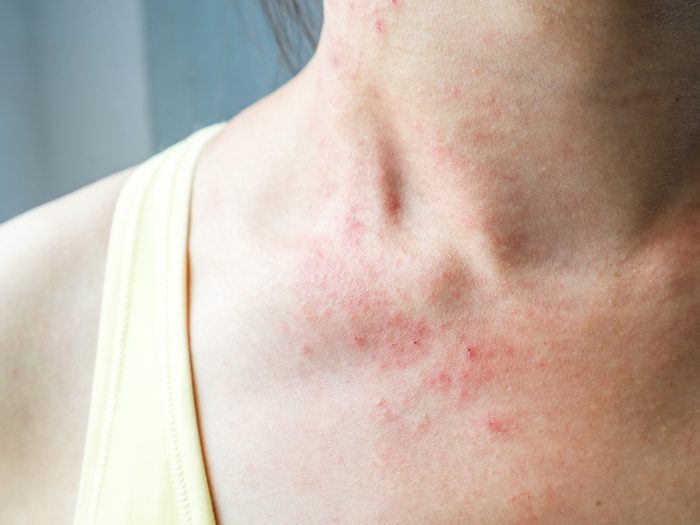
Note the location of your dry, sensitive skin
You can get dry, irritated, and sensitive skin from allergies, skin conditions, allergies, or a reaction to something in your environment, like detergents or fragrances. To figure out if you might have eczema, note where the irritation is located on your body, says Jeffrey S. Fromowitz, MD, a dermatologist and the managing partner and medical director at Dermatology of Boca, in Boca Raton, FL. “Eczema or atopic dermatitis tends to favour flexural areas—the fold of the arms, the fold of the wrist, the fold of the neck, and the folds behind the knee,” he says. “That’s where eczema tends to be most prominent and is a fairly clear indication that it’s not just an irritation from fabric or perfume, which tend to be spread across the body.” Learn more on what your skin reveals about your overall well-being.
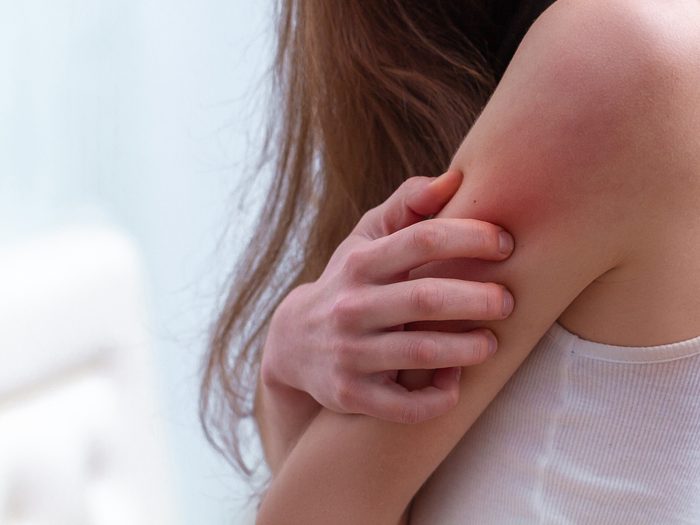
Do you have an “itch that rashes?”
Intense itching is another common symptom of eczema—but that could also be an allergic reaction or irritation from a new beauty product. So, how do you know the difference? “Again, it’s important to note the location of the intense itch like the severely dry and sensitive skin,” says Dr. Fromowitz. “The biggest indicator is whether the itch develops before or after the presence of a physical rash.” Eczema is known as the rash that itches, because you will likely get an intense itch that precedes the development of a rash. With contact dermatitis, or other forms of rashes, it is often the opposite: The rash appears before you get itchy. (Psst: You may want to pay attention to these strange skin problems that could be a sign of a serious disease.)
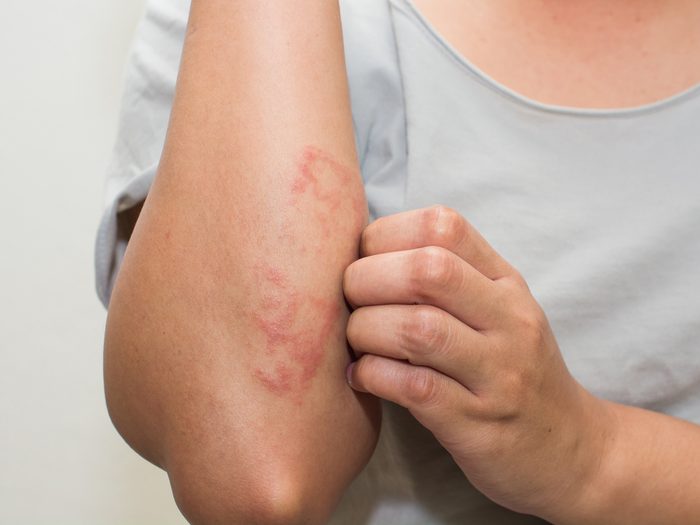
Check the shape of your blisters or rash
Developing blisters or peeling skin is uncomfortable and worrisome no matter what the cause. Both eczema in a severe form and dermatitis from poison oak or ivy can blister. The distinction is in the distribution and shape of the blisters, according to Dr. Fromowitz. If you notice these conditions on places like the surface of your arms or legs over a muscle, it’s likely caused by a reaction to a plant as opposed to blisters in the folds where eczema lives. “Also, the shape of the blisters will be different,” he says. Poison ivy rashes tend to be linear lines, while eczema blisters tend to be round and merge together.
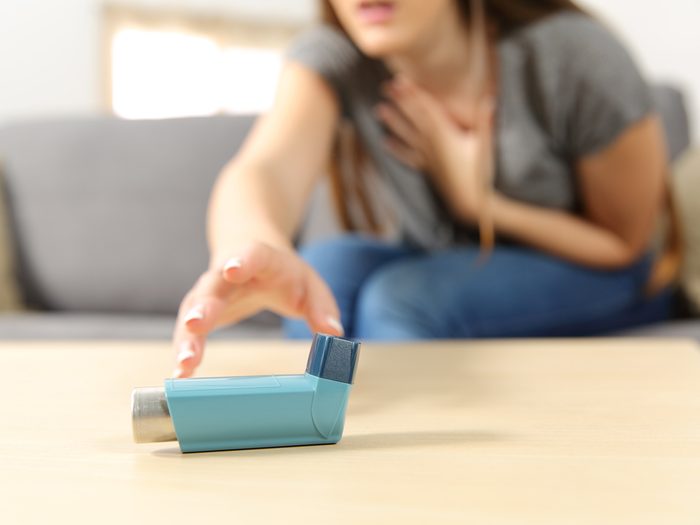
Do you also suffer from asthma or hay fever?
People often mistake the red, inflamed skin of eczema for temporary irritation from clothing, grass, or pets—or acne, allergies, psoriasis, and other skin conditions. The difference will be the duration and pattern of the redness and inflammation. Dr. Fromowitz’s advice: “Ask yourself, how long has it been there, is this the first time it has ever happened, do you have also a history of asthma and allergies, and has anyone else in the family had something like this?” Eczema is part of what doctors call the atopic triad, along with asthma and hay fever. If you suffer from one of those conditions along with red inflamed skin in the flexural areas, then it’s more likely eczema. Also, since the condition is genetic, it’s likely you would have had similar symptoms as a child, and it would be a recurring problem. If this is the first time your skin is reacting this way—or it’s rare—then it’s probably due to an irritation and not eczema.
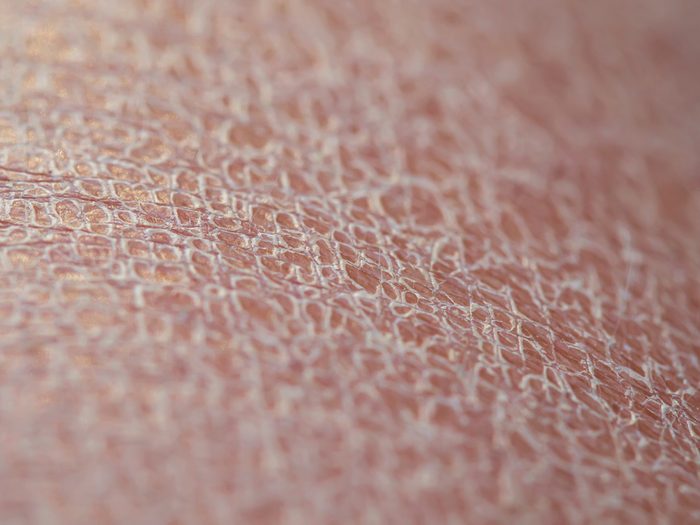
Those scaly areas come with other symptoms
Remember that scaly patches of skin could come from things like psoriasis or contact dermatitis—or it may just be dry skin due to dry weather or dry air in your home. “If you live in a city with allergens and pollutants or use indoor heating, it can simply make your skin dry,” says Dr. Fromowitz. “But, it can also exacerbate eczema if you do have it,” he warns. “To know what’s eczema, check to see if it’s in the folds of your skin, if it’s itchy, figure out how often it occurs, and if you also suffer from asthma or hay fever. You have to look at a bigger picture.”
Next, learn how to prevent an eczema flare-up as the cold weather rolls in.
